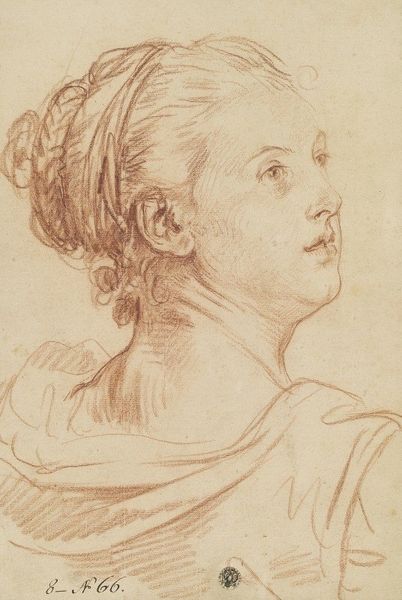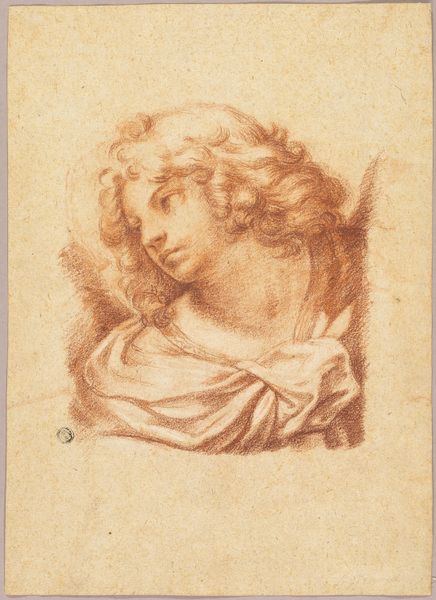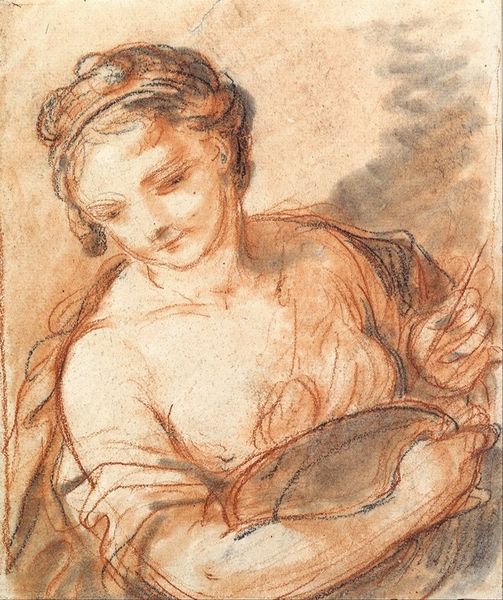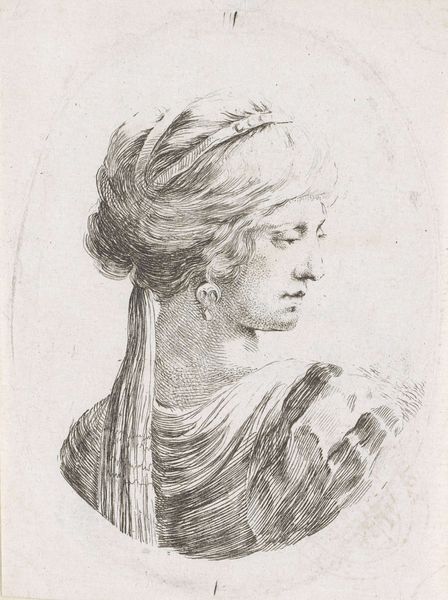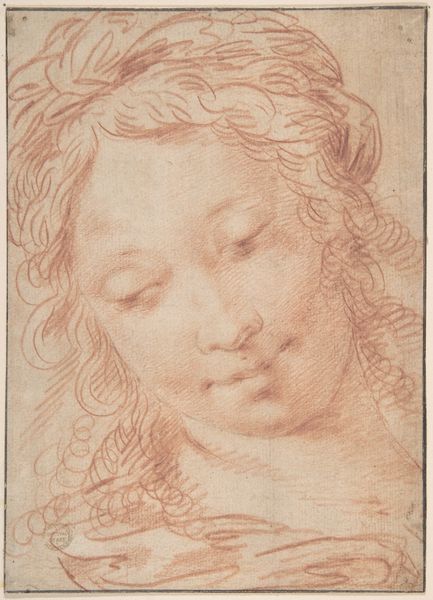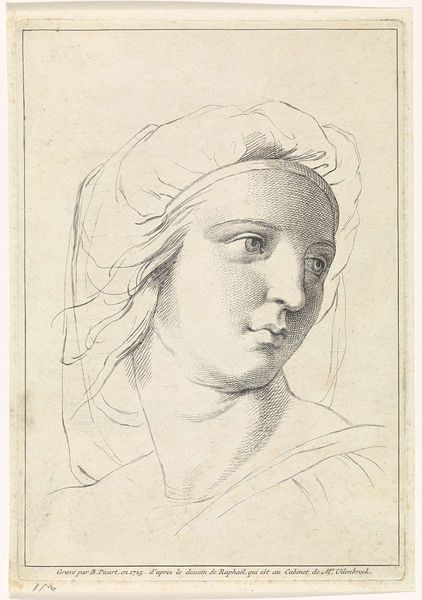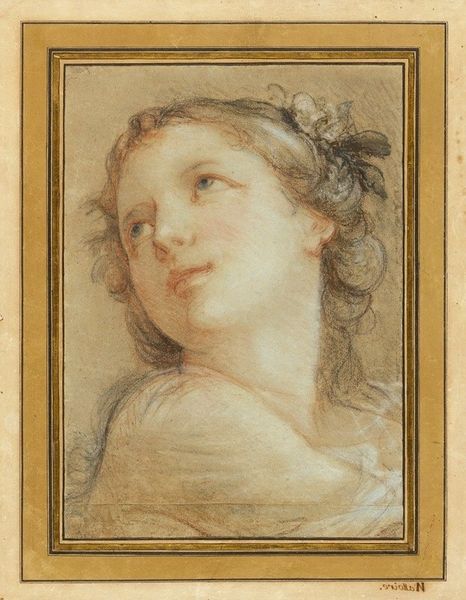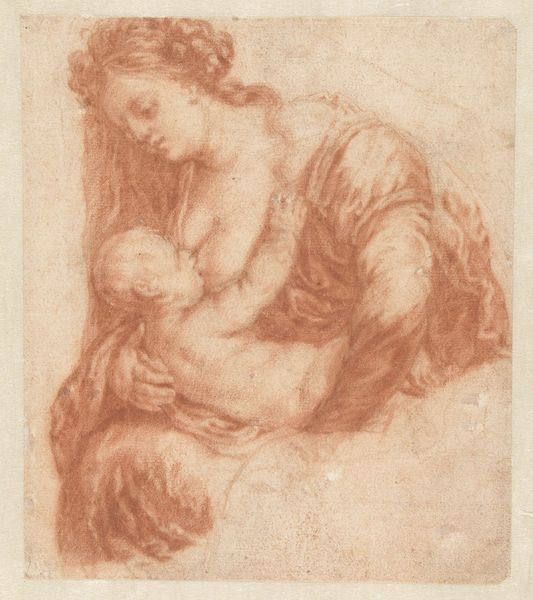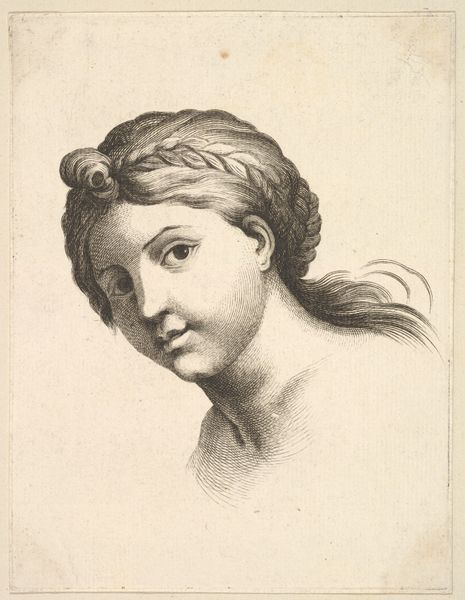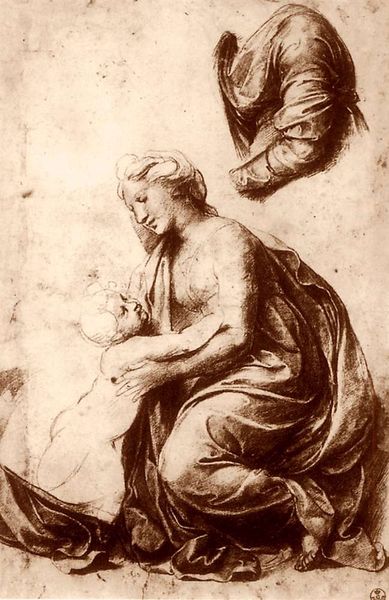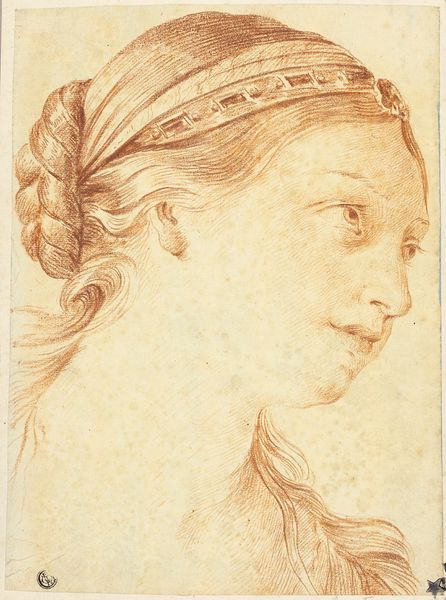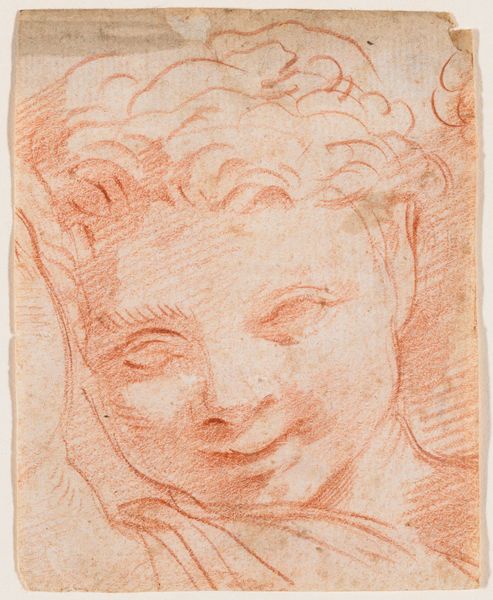
drawing, charcoal
#
portrait
#
drawing
#
pencil sketch
#
charcoal drawing
#
figuration
#
11_renaissance
#
pencil drawing
#
charcoal
#
history-painting
#
italian-renaissance
Dimensions: 35.5 x 25 cm
Copyright: Public domain
Curator: Immediately, the rendering evokes a sense of melancholic beauty. The warm hues of the charcoal imbue the subject with a feeling of timelessness, don't you think? Editor: Indeed. And, for our listeners, this is Michelangelo's “Cleopatra,” a drawing created around 1534 that currently resides in the Uffizi Gallery in Florence. What draws me in most is the contrast in how Cleopatra is usually depicted. There is an element of softness rather than seduction that seems poignant given her fate. Curator: Precisely. It speaks volumes about shifting cultural perceptions of powerful women through the ages. Remember, this wasn't a commission for public display but a private work. Consider the period, the complexities of power in Renaissance Italy, and the weight of historical figures like Cleopatra being re-examined. Was this simply an exercise in form, or was Michelangelo trying to tell us something about leadership and tragedy? Editor: Her elaborate hairstyle, a braided crown atop her head, is remarkable. Hair often symbolized status, but more intimately it represents power over self. The rendering of it also bears some visual similarity to a serpent. Do you think this relates to the method of her death, by snakebite? Does it subtly foreshadow her end, imbuing her with a sense of tragic inevitability? Curator: A compelling point. And in terms of artistic style, Michelangelo has masterfully conveyed her dignity through the classical contrapposto of her neck and shoulders, creating a powerful dialogue between idealized beauty and realistic vulnerability. It feels incredibly intimate and private in its tone. This drawing demonstrates how social standing does not always protect one from emotional suffering. Editor: Right, and in some Renaissance traditions, serpents can be linked to temptation and hidden knowledge. The implications suggest much deeper psychological dimensions than the portrait initially offers. Perhaps it is a reflection on feminine influence over political structures as much as the price that is extracted. Curator: The subtlety, for me, reinforces the narrative power an artwork can wield, sometimes more effectively than grand pronouncements in formal portraits or historical painting. Its quiet dignity is quite revolutionary in hindsight. Editor: A sensitive portrayal of the infamous Queen that moves beyond legend, offering a human connection across time. I, for one, leave with a newfound appreciation for the complexity of the celebrated ruler and the man behind the charcoal.
Comments
No comments
Be the first to comment and join the conversation on the ultimate creative platform.
